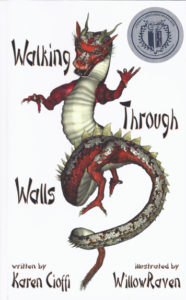 When a writer’s muse seems to be on vacation, she may be at a loss for story ideas. While there are a number of sites and tools online to help get the creative juices flowing, one tool that writers might overlook is studying folktales.
When a writer’s muse seems to be on vacation, she may be at a loss for story ideas. While there are a number of sites and tools online to help get the creative juices flowing, one tool that writers might overlook is studying folktales.
Reading folktales is a great way to spin a new yarn, especially for children’s writing. I recently did a review of a children’s picture book published by Sylvan Dell that was based on an American Indian folktale. This shows they are publishable.
Folktales, also known as tall tales, and folklore, are stories specific to a country or region. They are usually short stories dealing with everyday life that come from oral tradition that is passed from generation to generation. Most often these tales involve animals, heavenly objects, and other non-human entities that possess human characteristics.
There is Mexican folklore, Irish folklore, Chinese folklore, as well as folklore from many other countries that have tales unique to their area. There is also American folklore that encompasses stories from each of the 50 states. There is a huge supply of stories to spin and weave.
In addition to reviewing a couple of published children’s books that were based on folktales, I wrote a children’s fantasy story based on an ancient Chinese tale.
Interestingly, prior to receiving an outline of the tale from a Chinese nonfiction writer I knew from one of my writing groups, I never thought of rewriting folktales. But, once given the outline, I loved the story and the message it presented. The outline itself was very rough and written with an adult as the main character (MC), which is often the case with very old folktales.
After reading the story I knew the MC would need to become a child. I think every children’s writer is aware that children want to read about children, not adults. And, the MC needs to be a couple of years older than the target audience the author is writing for.
Based on this, I decided to make my MC a 12-year-old boy. And, since I liked the ancient Chinese flavor of the story, I kept it and made the story take place in the 16th century China. After this was set, I needed to come up with a title and the MC’s name.
When choosing a title for your book, it’s important to keep it in line with the story and make it something that will be marketable to the age group you’re targeting. I chose Walking Through Walls, and it is scheduled to be available March 2011(published through 4RV Publishing).
As far as the character’s name, you will need to base it on the time period and geographic location of the story, unless the character is out of his element. Since my story was to take place in China, I used a Chinese name, Wang.
To keep the flavor of your story consistent, you will also need to give it a feeling of authenticity. This will involve some research. How did the people dress during the time of your story? What names were used? What did they eat? What type of work or schooling was available? What locations might you mention? What type of crops and vegetation would be present? What types of homes did they live in? There are many aspects of the story that you will want to make as authentic as possible. And, it does matter, even in fiction stories; it will add richness to your story.
The next time you’re in the library, ask the librarian to show you a few folktales. Then imagine how you might rewrite one or more of them for today’s children’s book market.
Walking Through Walls was honored with a Children’s Literary Classics 2012 Silver Award! Get your copy today at Amazon.
MORE ON WRITING FOR CHILDREN
The Book Summary – Five Must-Know Components
Learn to Write for Children – 3 Basic Tools
Children’s Writing and Publishing Jargon – 11 of the Basics
Please don’t forget to share!
1 thought on “Rewriting a Folktale – Walking Through Walls”